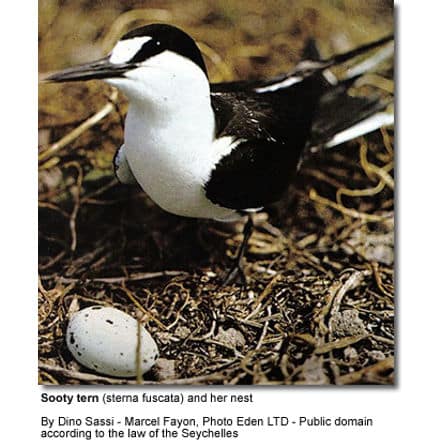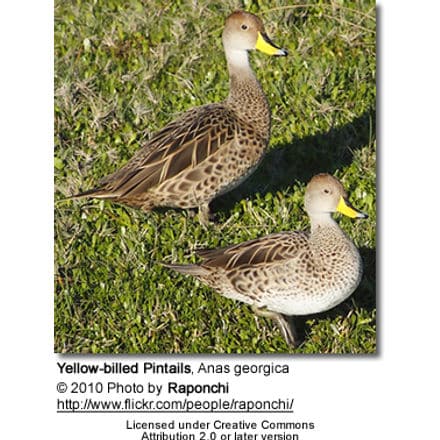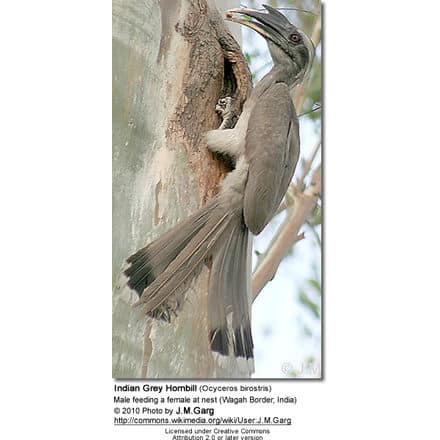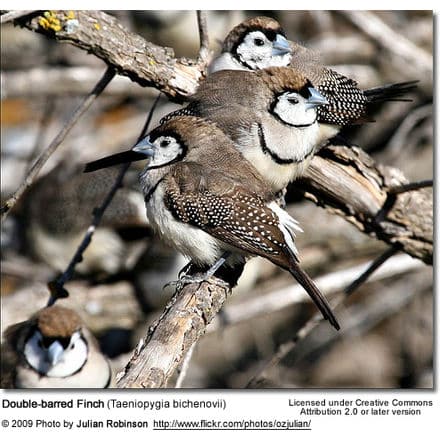Sooty Terns (Onychoprion fuscatus)
The Sooty Terns, Onychoprion fuscatus (formerly Sterna fuscata, is a seabird of the tern family (Sternidae). It is a bird of the tropical oceans, breeding on islands throughout the equatorial zone.
Colloquially, it is known as the Wideawake Tern or just wideawake. This refers to the incessant calls produced by a colony of these birds, as does the Hawaiian name ʻewa ʻewa which roughly means “cacophony”.
In most of Polynesia its name is manutara or similar however – literally “tern-bird”, though it might be better rendered in English as “the tern” or “common tern”.
This refers to the fact that wherever Polynesian seafarers went on their long voyages, they would find these birds, and usually in astounding numbers.
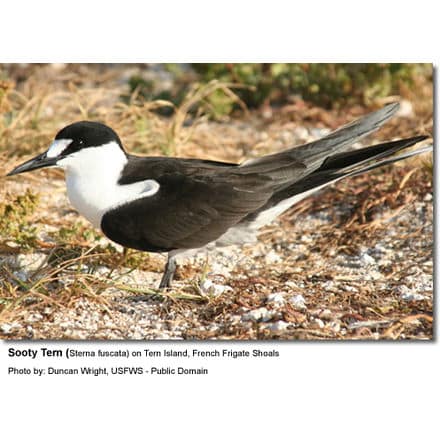
Description
This is a large tern, similar in size to the Sandwich Tern at 33-36 cm (13-14 in) long with a 82-94 cm (32-37 in) wingspan. The wings and deeply forked tail are long, and it has dark grey upperparts and white underparts. It has black legs and bill. Juvenile Sooty Terns are scaly grey above and below.
The Sooty Tern is unlikely to be confused with any tern apart from the similarly dark-backed but smaller Bridled Tern. It is darker-backed than that species, and has a broader white forehead and no pale neck collar.
The call is a loud piercing ker-wack-a-wack or kvaark.
Taxonomy
The Sooty Tern has little interspecific variation, but it can be divided into at least 2 allopatric (geographically separated) subspecies.
Some recent authors further subdivide the Indopacific population into up to 8 subspecies altogether, but much of the variation is really clinal. The affinities of the eastern Pacific birds (including the famous manutara of Easter Island) are most strongly contested.
Onychoprion fuscatus fuscatus (Linnaeus, 1766) – Atlantic Sooty Tern
Underparts white. Breeds Atlantic and Caribbean.
Onychoprion fuscatus nubilosus (Sparrman, 1788) – Indopacific Sooty Tern[4]
Underparts light grey in fresh plumage, dull white in worn plumage. Breeds from Red Sea across Indian Ocean to at least central Pacific. Some authors restrict this taxon to the Indian Ocean population and use the following subspecies for the birds from Indonesia to the Americas:
- Onychoprion fuscatus infuscatus – Sunda Sooty Tern (Lichtenstein, 1823) – Sunda Islands and vicinityOnychoprion fuscatus oahuensis – Central Pacific Sooty Tern (Bloxam, 1826) – Bonin Islands through Micronesia to southern PolynesiaOnychoprion fuscatus serrata – Melanesian Sooty Tern (Wagler, 1830) – Australia, New Guinea, New CaledoniaOnychoprion fuscatus luctuosa – Juan Fernández Sooty Tern (Philippi and Landbeck, 1866) – Juan Fernández IslandsOnychoprion fuscatus crissalis – East Pacific Sooty Tern Lawrence, 1872 – Eastern Pacific from Guadalupe Island to Galápagos IslandsOnychoprion fuscatus kermadeci – Kermadec Sooty Tern Mathews, 1916 – Kermadec IslandsOnychoprion fuscatus somaliensis – Somali Sooty Tern – Maydh Island (Gulf of Aden)
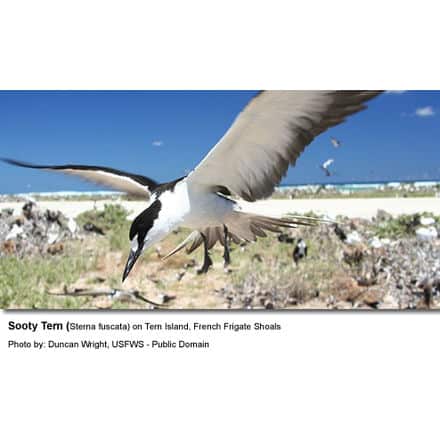
Ecology
This bird is migratory and dispersive, wintering more widely through the tropical oceans. It has very marine habits compared to most terns. This species is a rare vagrant to western Europe, although a bird was present at Cemlyn Bay, Wales for 11 days in July 2005]. It is also not normally found on the Pacific coasts of the Americas due to its pelagic habits. At Baja California, where several nesting locations are offshore, it can be seen more frequently, whereas for example only two individuals have ever been recorded on the coast of El Salvador – one ring recovered in 1972, and a bird photographed on October 10, 2001 at Lake Olomega[verification needed] which was probably blown there by a storm,
Sooty Terns breed in colonies on rocky or coral islands[6]. It nests in a ground scrape or hole and lays one to three eggs. It feeds by picking fish from the surface in marine environments, often in large flocks, and rarely comes to land except to breed, and can stay out to sea (either soaring or floating on the water) for between 3 to 10 years.
Role in Easter Island culture
On Easter Island, this species and the Grey-backed Tern are collectively known as manutara. The manutara played an important role in the tangata manu (“birdman”) ritual: whomever’s hopu (champion) could retrieve the first manutara egg from Motu Nui islet would become that year’s tangata manu; his clan would receive prime access to resources, especially seabird eggs.
Footnotes
- Bridge et al. (2005)
- From ʻewa, “crooked, out of shape, imperfect” (Pukui et al. 1992: p.17)
- The Polynesian word for terns (tara) is the same as the word for “pointed”; it is easy to see how these sharp-billed fork-tailed birds came to be called thus (Tregear, 1891)
- Or “Indian Ocean Sooty Tern” if more subspecies are accepted.
- Herrera et al. (2006)
- Streets (1877)
Beauty Of Birds strives to maintain accurate and up-to-date information; however, mistakes do happen. If you would like to correct or update any of the information, please contact us. THANK YOU!!!

